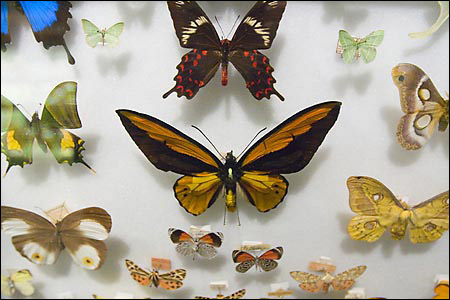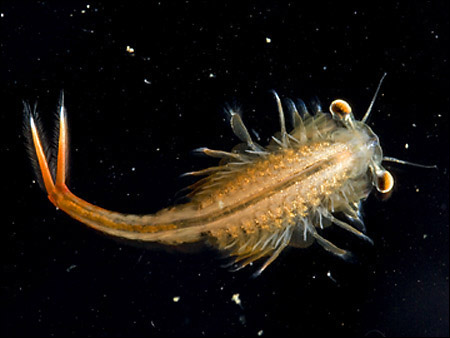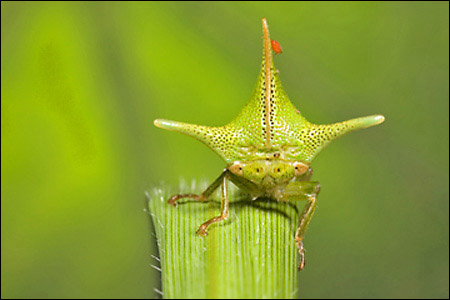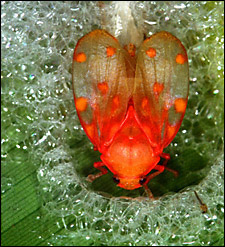Arthropods invade Harvard Museum of Natural History
Creatures that go bump in the night step into the spotlight
Scorpions, spiders, beetles, and their leggy kin are front and creepy-crawly center in the first new permanent exhibit in 20 years in the biological galleries of the Harvard Museum of Natural History (HMNH).
The exhibit showcases the latest scientific thinking about these much-maligned “monster movie” creatures coupled with specimens culled from Harvard’s vast collections.
“Arthropods: Creatures that Rule,” which opened last Saturday (Sept. 30), starts off with a wall-sized family tree greeting visitors as they enter the gallery. The tree highlights the relationships between a broad array of creatures called arthropods.

The most familiar group of arthropods is the insects, including creatures such as bees, beetles, and butterflies. Arthropods also include creatures that casual observers may lump together with insects, but which are not: spiders, centipedes, and millipedes.
Though all share the segmented body, hard outer shell, and jointed legs of arthropods, they vary enough so that insects, spiders, and centipedes all belong to different arthropod classes. Insects, for example, have six legs and three body parts. Spiders, on the other hand, have eight legs and two body parts, while centipedes can have dozens of body parts and, as their name suggests, more than a hundred legs.

Arthropods also include other familiar creatures, like crustaceans, including crabs and lobsters, as well as horseshoe crabs, scorpions, and sea spiders. Found in the ocean depths, sea spiders have small bodies and sport eight, 10, or even 12 legs – some of which are quite long, leading the exhibit’s scientific adviser, Associate Biology Professor Gonzalo Giribet, to describe the sea spider as “an animal that’s really all legs.”
“Arthropods: Creatures that Rule” occupies the gallery that used to house the museum’s bird display, which has been moved to another location in the museum. Museum Executive Director Elisabeth Werby said four faculty members had a hand in putting the exhibit together: Pellegrino University Professor Emeritus Edward O. Wilson, Biology Professor Brian Farrell, Hessel Professor of Biology Naomi Pierce, and Giribet.
Giribet, who serves as associate curator of invertebrates, said the exhibit’s title was chosen because, whether we realize it or not, arthropods have conquered the planet like no other creature.
In an opening speech delivered Thursday evening (Sept. 28) in the Geological Lecture Hall, Giribet said if one were to land on Earth for the first time, there’s a 99 percent chance – if you hit dry land – that an arthropod would be the first Earthling you’d meet. If you landed in water you might have to wait until you hit the bottom, he said, but arthropods are well represented there as well.

In fact, he said, 85 percent of all species on Earth are arthropods. They are the only creatures found from the ocean bottom to the top of mountains. In the flying insects, they have conquered air as well as land and sea. They’re not just all around us, they’re inside us too, in the form of parasitic species.
A recent study found that one hectare of tropical rainforest canopy holds more than 50 pounds of arthropods, an amount five to 10 times higher than previously thought. In the soil and leaf litter, arthropods are the dominant organisms. They even live in the spaces between sand grains making up the ocean floor.
“They live everywhere,” Giribet said.
Arthropods are not just in the here and now. They’re ancient creatures that thrived in prehistoric seas hundreds of millions of years ago, out of which some eventually traveled to become land colonizers.

The arthropod body plan may be the key to their success, Giribet said. Their different segments can be adapted to different purposes, as can the appendages attached to the segments.
“That you can adapt different segments to different functions has given them the ability to [adapt] to different habitats,” Giribet said.
The exhibit also includes live examples to complement the collection specimens. In separate cases crawl a black whip scorpion and five six- to eight-inch-long Sonoran Desert millipedes.
Despite their fearsome looks, Giribet said arthropods are misunderstood. Most are harmless, he said, adding that even scorpions aren’t as bad as most people think.
“Most arthropods are not harmful. Even scorpions are not that bad,” Giribet said, adding that some can be picked up by hand. “But you’ve got to know which end is which before you do.”
Related links:
- Daddy longlegs have a global reach: Daddy longlegs may prove to be valuable tools in the study of evolution, diversity, and environmental management
- These creatures see dusty duty: Obscure cousins of the glass flowers depict denizens of the deep
- Climate choices: Grim and grimmer: ‘We’re fated to have climate change no matter what we do’




